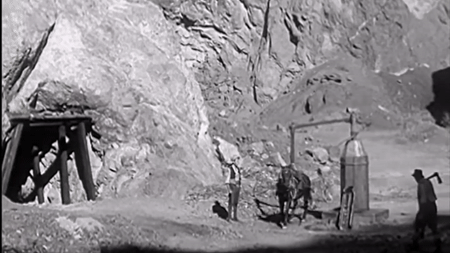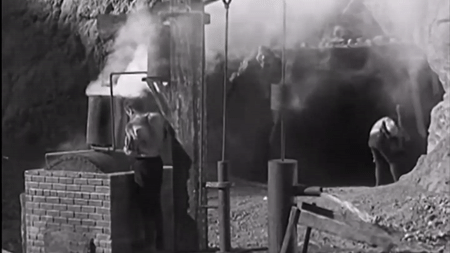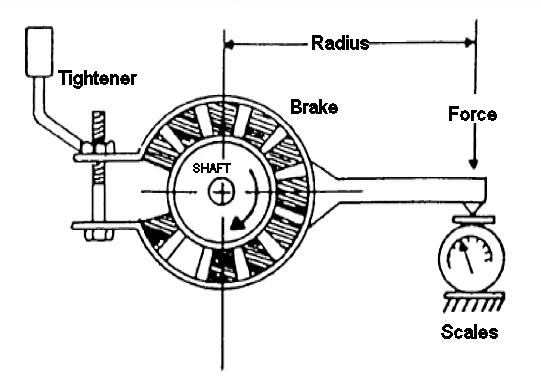and the rate at which Ft lbs of work was done is: Weight in lbs x 2 x pi x 12 ft x no of revolutions / minutes taken But to convert to HP - divide by 33,000 HP = Lbs weight x 2 pi Foot Radius x RPM / 33,000It would be nice if our Stirling engines could make horsepower, but we are not there yet.
Watts = WEIGHT Kg
x DIAMETER cms
x RPM
/ 195
Rather than raising weights in a mineshaft, Gaspard de Prony devised his Prony Brake.
Watts = WEIGHT ounces
x RADIUS inches
x RPM
x 746
/ 1 million
(It should be divide by 1,008,405.
But I'll divide by 1 million)
.......BACK
These re-enactments are from a 1937 Chevrolet film.
BY HORSE:---

BY STEAM:---
Is it actually the man who is pumping the water?

THE PRONY BRAKE
